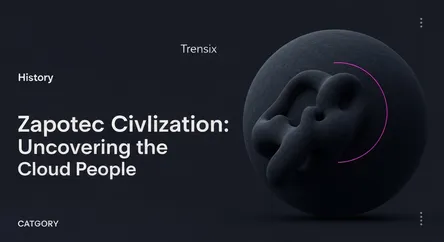History
Zapotec Civilization: Uncovering the Cloud People

Explore the Zapotec Civilization, known for its advanced writing, architecture in Monte Albán, and the rich cultural legacy it left in Oaxaca.
What is it?
The Zapotec Civilization was an indigenous pre-Columbian civilization that flourished in the Valley of Oaxaca in southern Mesoamerica. Originating around 700 BCE, they were known as the "Be'ena'a" or "Cloud People," believing they descended from the clouds. Their most significant center was Monte Albán, a city strategically built on a high plateau, which became a major political, economic, and ceremonial hub for over a thousand years. The Zapotecs developed one of the earliest writing systems in Mesoamerica, a sophisticated calendar, and were skilled architects and artisans. Their society was a hierarchical state with nobles and priests at the top, supported by an agricultural economy based on maize, beans, and squash, which utilized advanced irrigation systems.
Why is it trending?
Interest in the Zapotec civilization has surged due to remarkable recent archaeological discoveries. Advanced technologies like LiDAR (Light Detection and Ranging) have unveiled the true, vast extent of Zapotec sites like the 15th-century fortified city of Guiengola, revealing a complex urban layout previously unknown. Furthermore, in 2023, archaeologists using ground-scanning technology discovered a network of chambers and tunnels beneath a church in Mitla, a major Zapotec religious center. This discovery has been linked to historical accounts of a Zapotec "entrance to the underworld" called Lyobaa, sparking global fascination and rewriting our understanding of their spiritual practices.
How does it affect people?
The Zapotec legacy is vibrant and alive today. Over 400,000 descendants of the Zapotecs live primarily in their ancestral home of Oaxaca, Mexico, and in communities in the United States. Many continue to speak Zapotec languages and preserve ancient traditions in crafts like weaving and pottery, which are central to the region's cultural identity and economy. Zapotec traditions influence modern Oaxacan festivals, cuisine, and social structures. Their ancient archaeological sites, especially Monte Albán and Mitla, are major tourist attractions that contribute significantly to the local economy and our understanding of Mesoamerican history.